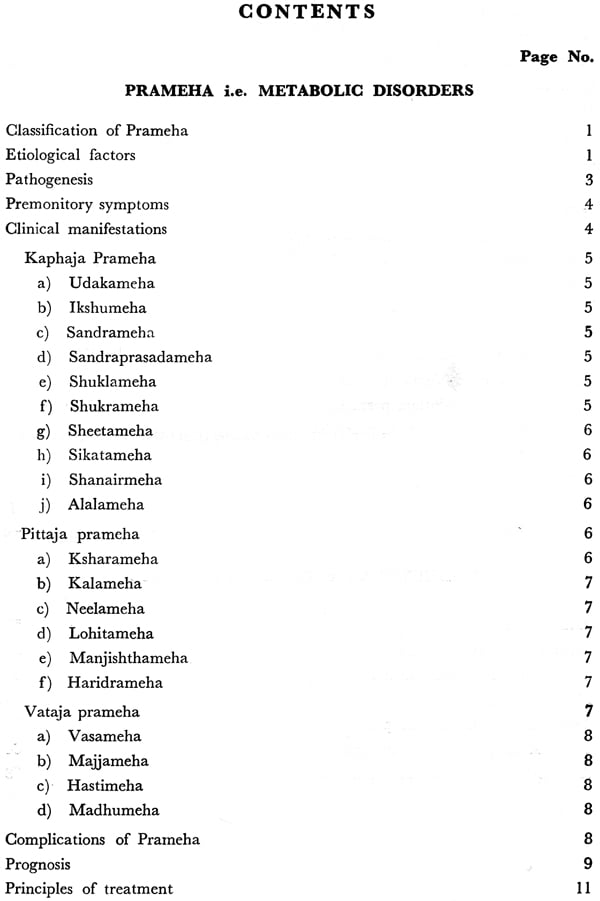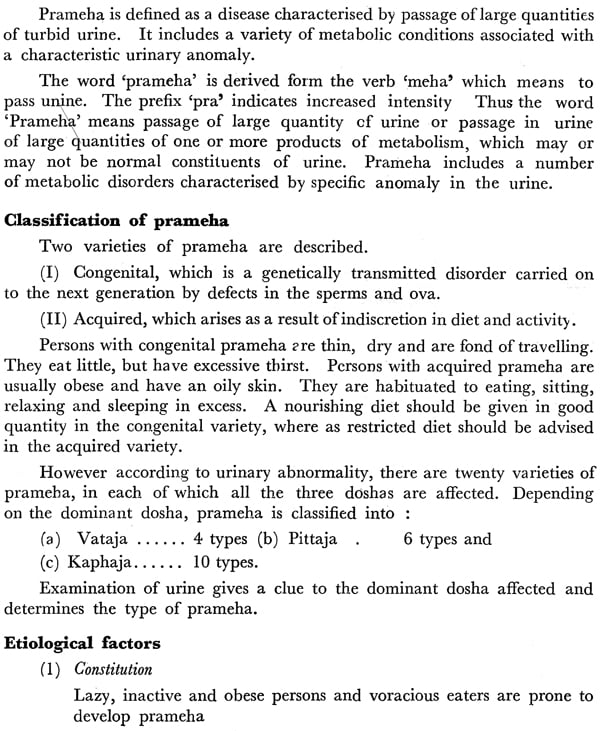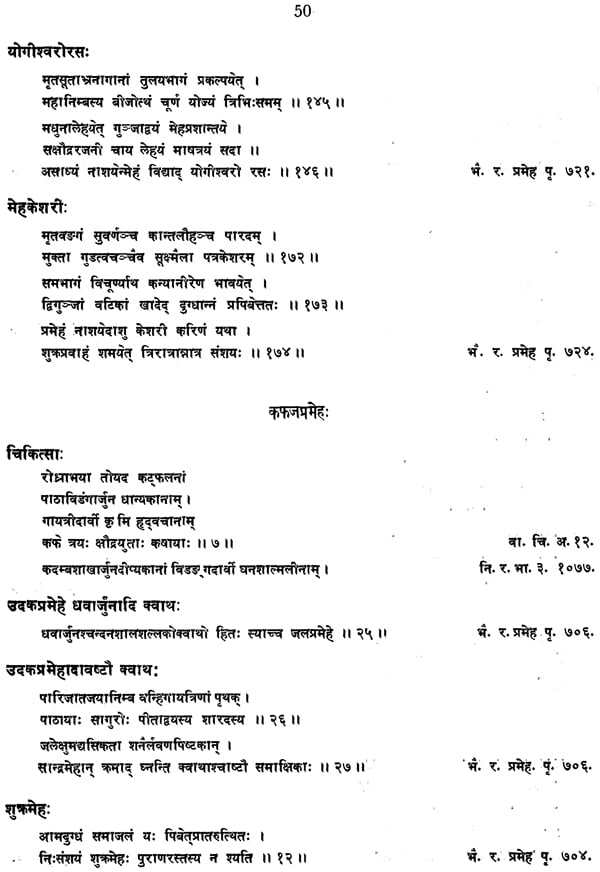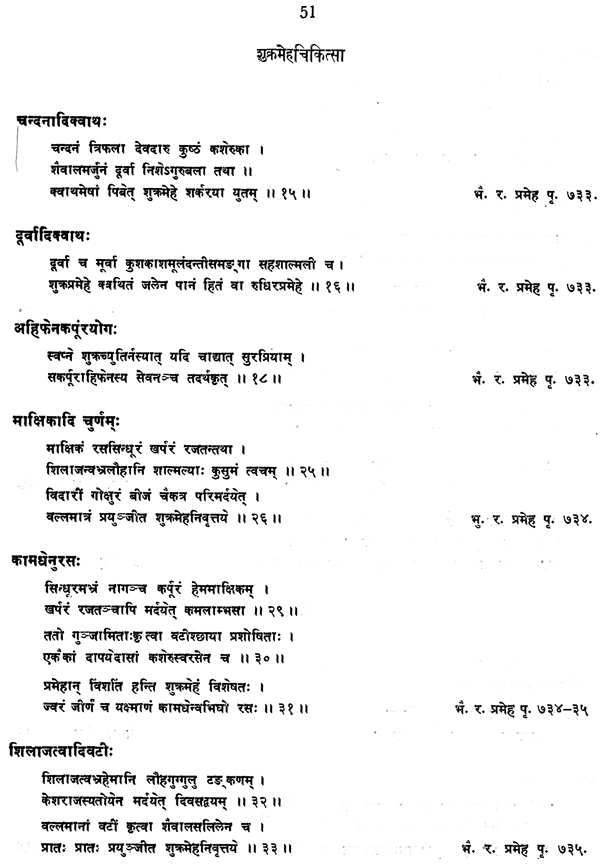
Prameha and Madhumeha (Metabolic Disorders & Diabetes Mellitus)
Book Specification
| Item Code: | NAV587 |
| Author: | V. B. Athavale |
| Publisher: | Chaukhamba Sanskrit Pratishthan |
| Language: | English and Sanskrit |
| Edition: | 1999 |
| ISBN: | 8170841380 |
| Pages: | 74 |
| Cover: | HARDCOVER |
| Other Details | 10.00 X 7.00 inch |
| Weight | 310 gm |
Book Description
The word 'Prameha' is derived from the verb ‘Meha’, which means 'to pass urine’ The prefix 'Pra' indicates intensity. Thus the word 'Prameha' means passage of large quantities of urine or passage in urine of one or more products of metabolism, which may or may not be a normal constituent of urine in large amounts. Prameha includes a number of metabolic disorders associated with the characteristic urinary abnormalities. The examination of urine gives us a clue to the diagnosis of the particular type of abnormality. Prameha is included in the major diseases of the body. Twenty different types of prameha are described. In addition, the guidelines for classifying and treating any new metabolic disorder characterised by specific urinary abnormality is given in the Ayurvedic texts.
In the history of western medicine, it is stated that in the Ebers Papyrus (Egypt, about 1500 B. C.) there was a mention of polyuria. The first good clinical description of the disease was made by Celsus and the name ‘Diabetes’ was introduced by Aretaeus, a Roman physician. Both Celsus and Aretaeus lived in the first century of Christian era.
It was in 1908 that Garrod realised the existence of a group of diseases caused by hereditary deficiency of enzymes necessary for normal metabolism. He termed these diseases as' Inborn errors of metabolism’. He had first described Alcaptonuria in 1908 and later described Albinism, Cystinosis and Pentosuria.
When one realises that the various metabolic disorders described in Modern medicine were not realised earlier than 80 years ago, one really wonders at the proficiency and insight of our ancient masters, who had described several metabolic disorders 5000 years ago. Ayurvedic physicians appreciated the hereditary mode of transmission and the incurability of these diseases, when they manifest as a congenital anomaly.
One cannot but appreciate the classical description of pathogenesis, clinical manifestation and the method of treatment of Madhumeha i.e. Diabetes mellitus, which is the commonest variety of Prameha. The difference between the juvenile diabetes and maturity onset diabetes are well depicted. i am sure that understanding of the basic principles of Ayurveda and the classification, pathogenesis and treatment of Prameha and their application to modern medicine will go a long way in unravelling the mysteries of metabolic disorders with greater ease.
The literal meaning of Ayurvedic texts, as far as possible, has been adhered to and the basic concepts presented in the original form. The relevent Sanskrit stanzas are also given as references.
This book will not only be useful to students, teachers and practitioners of Ayurveda, but will also be of great help to the practitioners and research workers of Modern medicine interested in the metabolic disorders.
**Contents and Sample Pages**











